Grab your umbrella and let’s talk about Hilo, Hawaii.
This city is on the windward side of the Big Island and gets more rain per year than any other city in the entire United States.
How much more?
More than 13 feet of rain fall each year.
It’s going to rain at least a little bit every single day.
Hilo might not be the city you see on Hawaiian postcards, and that’s a good and bad thing.
It doesn’t have picturesque sunny beaches like on the leeward side of the island.
It does have its own unique vibe.
Here you’ll find more waterfalls than you can Instagram in one day and unique outdoor experiences like walking through a lava tube and visiting the only tropical zoo in the country.
The farmer’s markets here are legendary for their unique items and traditional fruit that is tastier than anything you can find at home.
You can even walk right up to a flowing lava field for free (and safely).
This is also a great place to learn about the history and ongoing threat of Tsunamis and learn how a simple clock standing in a busy area got the nickname “The Doomsday Clock.”
Hilo does have a bit more of a crime edge to it.
Maybe it’s the dreary weather or the larger city size.
Either way, it’s good to prepare yourself for a side of Hawaii you might not expect.
Warnings & Dangers in Hilo

OVERALL RISK: MEDIUM
There's a medium risk in Hilo due to additional weather challenges, higher crime rates, and a few more risks than the typical tourist adventures. The entire island is policed by the Hawaii Police Department and the Hilo districts are split into North Hilo and South Hilo, with the city of Hilo being in the south district.

TRANSPORT & TAXIS RISK: LOW
There's a bus service in the county that is more built toward practical travel than tourist satisfaction. You can get a taxi or an Uber. Ideally, you can get your own car to explore here or you might not get to see the wide variety of amenities on the Big Island. It's going to get a little boring to be in rainy Hilo all the time and you'll miss some amazing wonders if you do so.

PICKPOCKETS RISK: MEDIUM
Theft rates are higher than the Hawaiian average here, so you should use extra caution with any bag, fanny pack, or wallet you carry with you. There is more of a drug problem on this side of the island, which could lead to more crime. If any city is going to get a medium risk for this in Hawaii, it's Hilo.

NATURAL DISASTERS RISK: MEDIUM
Hilo has twice seen the deadly brunt of a tsunami, once in 1946 and again in 1960. The Doomsday Clock is actually stuck at the time the tsunami hit in 1960. You should take any and all tsunami warnings seriously and make sure you know if you are in a tsunami danger zone. You also face the risk of flash flooding, earthquakes, and volcano eruptions as the only active volcano in Hawaii is on the Big Island. While on an average day, the weather will be quite consistent, these big risks do exist and you should study them before you arrive.

MUGGING RISK: LOW
There's a low risk, but it's important to remember this is a higher crime area than the west (leeward) side of the island. Stay in groups when possible and don't wander around at night.

TERRORISM RISK: MEDIUM
There's a medium risk because of the remote location that holds a lot of military power for the United States. The Pearl Harbor attack and the resulting memorial in Hawaii show just how vulnerable of a location this can be. You can learn about terrorism safety and homeland security on the Hawaii island website.

SCAMS RISK: MEDIUM
There's a medium risk of getting scammed started when you book the hotel. There is just an overwhelming amount of information about hotels and rental homes online. You need to first make sure you're booking with a valid and registered website or vendor. Working with a local travel agent is a great way to make sure you're getting a legitimate and insured trip. When you arrive, watch out for scams that seem to promise a "unique" experience. Scammers hope that tourists will believe anything they hear and will hand over money. Your hotel concierge or travel agent can help you sort the scam excursions from the real ones. One thing that isn't a scam? Food prices. Breakfast for four people can run $100. Groceries are expensive here too because most food travels across the ocean to get here.

WOMEN TRAVELERS RISK: LOW
Women should proceed with caution, but shouldn't avoid Hilo. It's great to travel in pairs or in a group of women if you can or be more inclined to take a group tour than go solo. Tourists are welcome in this part of Hawaii, but there just isn't as much catering to the tourists as you will find on the west and south sides of the island.

TAP WATER RISK: LOW
The water on the Big Island comes from a variety of different sources and there are a dozen water quality reports to review for each section. There are no outstanding tap water concerns in any area, but you can review the annual report at any time on the county's website. The water in Hawaii might taste a little different than you are used to. Some people opt only to use bottled water just to get a "normal" taste.
Safest Places to Visit in Hilo
A great first place to stop is the Farmer’s Market right in downtown Hilo.
Incredible local fruits are for sale and there are some handmade and unique crafts made by the people who live here.
Walking around the central part of Hilo is safe during the day, but use basic safety protocol to protect belongings.
You might see more homeless people here, but they aren’t known to be aggressive.
A visit to Liliuokalani Gardens is an immersive experience in Japanese culture.
The only other place you can see a Japanese garden of this magnitude is in Japan.
This is also a free attraction.
If you’re in Hilo, you must see the waterfalls.
Some of the best on all the islands reside here.
The Rainbow Falls is the most popular, with a spectacular 80-foot drop that usually spawns a stunning rainbow.
The ideal viewing time to see a rainbow is late morning.
Peepee Falls is another popular waterfall in this area, located inside Wailuku River State Park.
The falls cascade down into pools of water known as Boiling Pots.
Akata Falls takes waterfalls to new heights with more than a 400-foot drop to the bottom.
Getting to this waterfall takes a hike of almost half a mile, but the view is worth it.
This is one of the most popular waterfalls on this side of the island, so expect bigger crowds.
Coconut Island is a great way to get closer to the water and you can walk to it.
There is a diving spot here from a 20-foot-tall wall into deep water and plenty of SUP and kayak rentals are available.
Places to Avoid in Hilo
Hilo isn’t a very big city and the downtown and beachfront area hold the most people on an average day, so that’s where most of the crime is happening.
Plan your day to avoid missing the really cool parts of the Hilo specialties.
For example, the best chance to see a rainbow at any of the waterfalls is before 11 am.
This is when the sun is most likely to be out and creates a stunning array of colors.
You don’t have to avoid the beaches here but bring realistic expectations.
Every picture you’ve seen of a sandy beach is NOT from the Hilo area beaches.
These beaches are more likely to be rocky or, at best, have very dark sand.
There isn’t going to be a wide expanse of shoreline either.
Avoid planning a day without looking at the weather.
Since this is the wayward side of the island, the weather hits here first.
On the leeward side, you’ll get all that awesome sunshine and clear skies.
The wind carries the weather over the mountains and usually devours it by the time it hits Kailua-Kona (also referred to as just “Kona”) on the other side.
Avoid going stargazing alone at night.
Find a group to go with or book an excursion.
It’s worth the extra price to avoid wandering around the Hawaiian wilderness in the dark and seeing the stars this close to the equator is a once-in-a-lifetime event.
Avoid giving any money to homeless people or anyone begging for money.
There is a meth problem on this side of the island and there’s a good chance you’ll end up just paying for someone’s next high.
Also, giving money to one person could attract more.
I was once visiting New Orleans, which also has a high population of homeless, and I was walking around on a Sunday morning by myself.
A man convinced me he just wanted a McDonald’s breakfast.
I gave him five bucks and ended up having a trail of homeless people following me.
I ended up running back to the hotel for a few hours because I was scared of the growing crowd.
For rainy days, check out the Pacific Tsunami Museum.
Hilo has twice been the site of devastating tsunamis, wiping out a large section of the town and killing dozens of people.
This museum is as much a living memorial as well as an education center for this rare but extreme weather event.
Safety Tips for Traveling to Hilo
- Be prepared for rain, and a lot of it. You need good waterproof shoes, a rain jacket, several changes of socks, and a waterproof hat. Since it’s so humid here, you’ll end up being soaked the whole day and adding sweat on top of the rainwater. That’s not going to be a comfortable day for you if you aren’t prepared.
- Enjoy the waterfalls from a distance and don’t get into the water unless you have a flotation device and are an excellent swimmer. 25% of the people who drown in rivers in Hawaii do so in this river. It looks like a slice of paradise, I know, but it’s really a treacherous flow of water. Do not enter the water under any circumstances after heavy rain.
- Bring a lot of bug spray with you and re-apply often. There are more mosquitoes here than you can even imagine. They are most active in the morning and evening. With the amount of rain and sweating here, the bug spray can wash off easily, so re-application will be needed. The Hawaiian Health Department has a whole section on its website called “Fight the Bite” to learn more about the dangers of mosquitos.
- Don’t take any flowers, plants, rocks, sand, or anything else you find in nature here. It’s illegal to take anything from parks, to begin with (that holds true in all 50 states), but in Hawaii, people who steal natural items are said to be cursed by Pele. Legend has it that a thief will experience bad luck for eternity.
- Never cross any fences or boundaries in any area when hiking or looking at waterfalls. There’s a good chance any sign warning of a danger or a fence that is installed came to be after a deadly accident.
- The Clock of Doom is hidden in plain sight in Hilo. It’s a tall clock on a green pole with a memorial plaque on the bottom. The clock is frozen at 1:04 am, which is when the May 1960 tsunami hit overnight. It is located in front of the Naniloa Golf Course and you’ll have to park nearby and walk to it.
- If you see smoke coming from the Kilauea volcano in the distance, you don’t need to panic. That’s perfectly normal behavior for an active volcano. You will get emergency alerts if there is a risk of eruption.
- Should you choose to visit Hawaii Volcanoes National Park, you have to study well ahead of time. You can get very close to lava and I could write a whole article about how to be lava and volcano safe. The three big warnings:
• Wear closed-toed shoes and long pants. This protects your feet from heat and slippery, sharp rocks.
• Don’t go into closed areas. They are clearly marked and are very dangerous if you don’t follow the warnings. Five people have died in the past few decades from the eruption or lava-related tragedies.
• If you see a point where the hot lava meets the ocean, avoid the plume of smoke as much as possible. This is a toxic gas with small particles that can make you very sick. This smoke is what causes “vog” to accumulate over parts of the Big Island. This area is also where explosions and wall collapses can easily happen, so don’t go close to the rock edge to get a better view. - Shake your shoes each morning to make sure there isn’t a centipede inside. This is one of the only dangerous animals on land in Hawaii. The centipedes can grow up to eight inches long and an inch wide and they pack one helluva sting.
- This isn’t the Garden of Eden, so don’t just eat any fruit you come across. While Hawaii has amazing fresh fruit, some of the toxic vs. healthy fruits dangling from a tree could look very similar. Save the fruit-eating for the farmer’s market or restaurant.
So... How Safe Is Hilo Really?
The biggest safety concern in Hilo is more about property theft than violent crimes.
While the violent crime rate is higher than the Hawaiian average, there is a one in 316 chance of being a victim.
That number is totaled based on violent crimes and a population of 44,000.
Add in the 32,000 people who visit here a month and that risk goes down a lot.
There’s a one in 32 chance of being a victim of property crime, but the same “add in the tourist population” math exists on that high-risk number as well.
Hilo is just a more rugged part of Hawaii in terms of scenery and street crime.
Practicing basic personal protection as you would on any vacation goes a long way.
Another point to punctuate – and I can’t tell you how many other people who are experts in Hawaiian travel have told me this – you must treat your car with the utmost security measures.
Car break-ins are quite common and the average theft loss in all of Hawaii was $600 PER car break-in.
How Does Hilo Compare?
| City | Safety Index |
|---|---|
| Hilo | 65 |
| Deadwood | 80 |
| Sturgis | 80 |
| Pierre | 81 |
| Spearfish | 80 |
| Hill City | 83 |
| Sevierville | 73 |
| Temuco (Chile) | 31 |
| Puno (Peru) | 45 |
| Nara (Japan) | 88 |
| Kanazawa (Japan) | 83 |
| Hammamet (Tunisia) | 78 |
| Sidi Bou Said (Tunisia) | 42 |
Useful Information

Visas
A big annoyance of Hawaiians is that people from the mainland don't treat Hawaii as part of the United States (which it is). If you are American, you do not need a passport or Visa to visit Hawaii, as much as you wouldn't need one to visit Iowa. Non-residents need a Visa to get through the airport where Border Patrol and Homeland Security will review the Visa. It's important to note the Visa doesn't guarantee access, but unless you're on a watch list or wanted by officials, you'll get through just fine in most cases.

Currency
You can only use the U.S. Dollar here. Try to spread out the cash you bring throughout your pockets and even in your sock. This will prevent you from bringing out a large amount of money when shopping in the villages. While most places take credit cards, having some walking around money isn't a bad idea. You just have to protect your cash and not keep it in one place.

Weather
You definitely need all kinds of rain gear here. We talked about that. The temperature is pretty standard throughout the year, with the seasons being more evident in the movement of the ocean than in the temperature. You'll want to bring long-sleeved shirts and long pants that are lightweight to protect against the plants, rocks, and mosquitoes on a hike.

Airports
The Hilo airport is one of the only international airports on the islands, but the Honolulu airport is the busiest. HNL is on the island of Oahu, so if you fly there you'll need a connecting flight to get to the Big Island of Hawaii.

Travel Insurance
With all the warnings we went through in this article, and believe me, when I say we haven't even scratched the surface, it's a great idea to have travel insurance, and make sure you know how much your health insurance covers accidents while traveling.
Hilo Weather Averages (Temperatures)
Average High/Low Temperature
| Temperature / Month | Jan | Feb | Mar | Apr | May | Jun | Jul | Aug | Sep | Oct | Nov | Dec |
|---|---|---|---|---|---|---|---|---|---|---|---|---|
| High °C |
27 | 27 | 26 | 27 | 27 | 28 | 29 | 29 | 29 | 29 | 27 | 27 |
| Low °C |
18 | 18 | 18 | 19 | 19 | 20 | 21 | 21 | 21 | 20 | 19 | 18 |
| High °F |
81 | 81 | 79 | 81 | 81 | 82 | 84 | 84 | 84 | 84 | 81 | 81 |
| Low °F |
64 | 64 | 64 | 66 | 66 | 68 | 70 | 70 | 70 | 68 | 66 | 64 |
Hawaii - Safety by City
| City | Safety Index |
|---|---|
| Hilo | 65 |
| Honolulu | 65 |
| Kailua-Kona | 84 |
| Lanai City | 89 |
| Maui | 91 |
| Princeville | 88 |
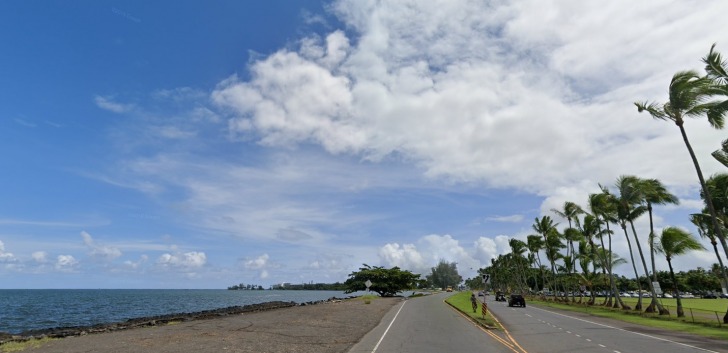
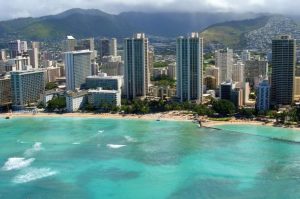
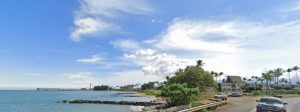
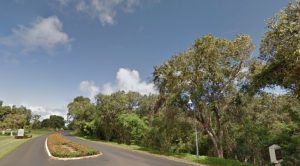
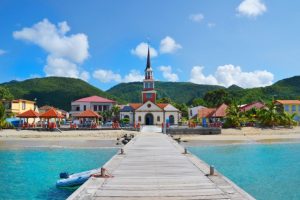
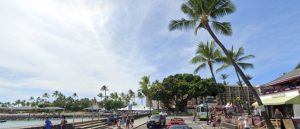
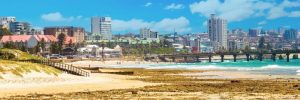





Why
What do you mean Clock of Doom? It is simply called the Tsunami clock.
The place where the terrorism happen was on Oahu btw.
As a longtime resident of Hilo, I can attest to its safety. While every city has its issues, I’ve always felt secure here.
I recently visited Hilo for a week and felt completely safe exploring the town and surrounding areas. The locals were friendly, and I didn’t encounter any concerning situations.